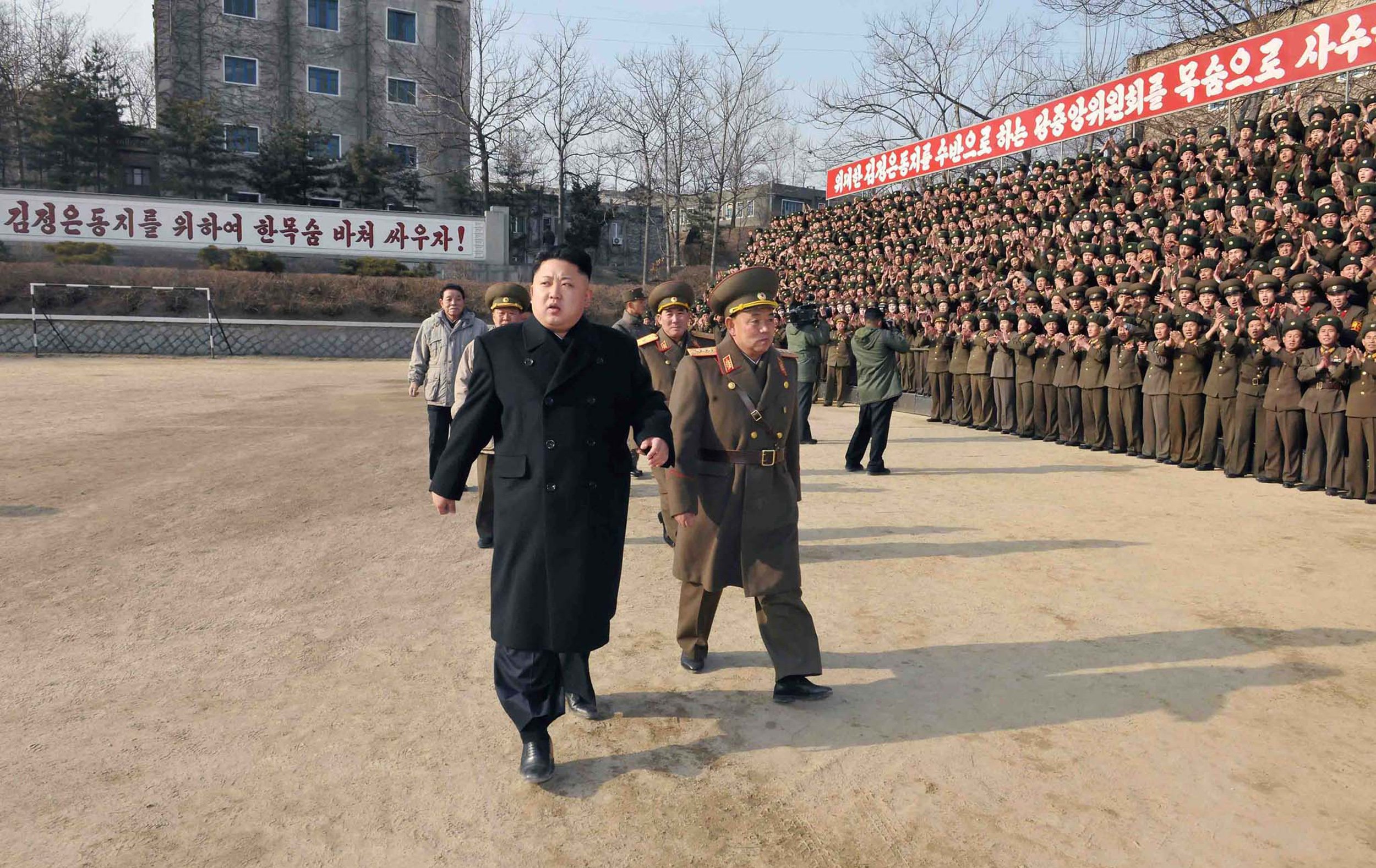
If a war broke out between the U.S. and North Korea, the U.S. military would have an array of powerful weapons at its disposal that would give it a massive advantage over the rogue state.
The U.S. military is ranked number one in the world in terms of overall capabilities, while North Korea's military comes in 23rd place, according to the 2017 ranking of the world's militaries from the Global Firepower Index.
Here are five of the most powerful and advanced weapons the U.S. has at its disposal, which help explain why it has the mightiest military in the world:
B83 Nuclear Bomb
The B83 is the largest nuclear weapon in the U.S. military's stockpile of roughly 6,800 weapons. It has a maximum yield of 1.2 megatons, equivalent to 1,200,000 tons of TNT, making it approximately 80 times more powerful than the atomic bomb dropped on Hiroshima by the U.S. during World War II, according to Popular Mechanics.
B61-12 Nuclear Bomb
The B61-12 has a maximum yield of just 50 kilotons, the equivalent of 50,000 tons of TNT. It's not the most powerful nuclear bomb in the U.S. arsenal, but its incredible accuracy arguably makes it the most dangerous. The bomb is equipped with a GPS and laser guidance in its nose, which help guide it within 100 feet of its target.
The U.S. is building a nuclear bomb that's more accurate than ever https://t.co/Zfn0ZnhZER pic.twitter.com/RG5geOVHmi
— Newsweek (@Newsweek) April 20, 2017
Trident II (D5) Missile
The Trident II (D5) is a submarine-launched ballistic missile that is literally designed to destroy entire countries. It's capable of carrying multiple re-entry bodies equipped with nuclear warheads and has a range of roughly 4,000 nautical miles, according to the U.S. Navy. The missile is deployed aboard Ohio-class submarines, each capable of carrying 20 D5 missiles. It's extremely reliable and has executed 165 successful test flights since its introduction to the fleet in 1989, according to the Navy.
What's the world's most reliable large ballistic missile? Trident II D5: https://t.co/FfMDAvdhOO Photo: @NavySSP pic.twitter.com/kfAj80l6WC
— Lockheed Martin (@LockheedMartin) November 10, 2015
LGM-30 Minuteman Missile
The LGM-30 Minuteman Missile is an intercontinental ballistic missile (ICBM) capable of carrying a nuclear warhead to a target 6,000 miles away (roughly the distance between New York City and Pyongyang), according to the U.S. military. In April, the military said it currently had 400 of these missiles in its arsenal.
The Massive Ordnance Penetrator (MOP)
The Massive Ordnance Penetrator (MOP), often referred to as a "bunker buster," is 20 feet long, weighs 30,000 pounds (15 tons) and carries 5,300 pounds of explosive filler. It's a massive precision-guided bomb typically dropped from B-2 stealth bombers and is capable of penetrating some of the most fortified bunkers in the world––it can break through more than 60 feet of concrete. The U.S. Air Force describes the bomb, which is non-nuclear, as a "weapon system designed to accomplish a difficult, complicated mission of reaching and destroying our adversaries' weapons of mass destruction located in well protected facilities." The MOP, which is a non-nuclear weapon, could play a vital role in finding and destroying North Korea's nuclear arsenal in the event of a war.
The 21K lbs #MotherOfAllBombs isn't our largest non-nuclear bomb.
— Bob Owens (@bob_owens) April 13, 2017
Behold the 30K lbs Massive Ordnance Penetrator (MOP). pic.twitter.com/xUwQfJfQKw
A weapon's overall strength does not necessarily mean its use is practical in every scenario and though the U.S. military is confident it would defeat North Korea in a war, it would still face many significant challenges if such a conflict were to occur. The U.S. Joint Chiefs of Staff, for example, said in November it had concluded a ground invasion would be necessary to confidently eliminate North Korea's nuclear arsenal since only limited intelligence is available on where it stores its military assets.
It's widely agreed among experts a conflict between the U.S. and North Korea would be extremely bloody and possibly lead to millions of deaths. A November report from the Congressional Research Service concluded 300,000 would die in the first few days of such a conflict, even without the involvement of nuclear weapons.
The Trump administration has said it hopes to resolve its differences with North Korea over its nuclear program via diplomatic means, but some continue to believe a war might be on the horizon. Republican Senator Lindsey Graham, who sits on the Senate Armed Services Committee and plays golf with President Donald Trump, recently said there's a 30 percent chance Trump will launch a military strike against North Korea.
Uncommon Knowledge
Newsweek is committed to challenging conventional wisdom and finding connections in the search for common ground.
Newsweek is committed to challenging conventional wisdom and finding connections in the search for common ground.
About the writer
To read how Newsweek uses AI as a newsroom tool, Click here.








